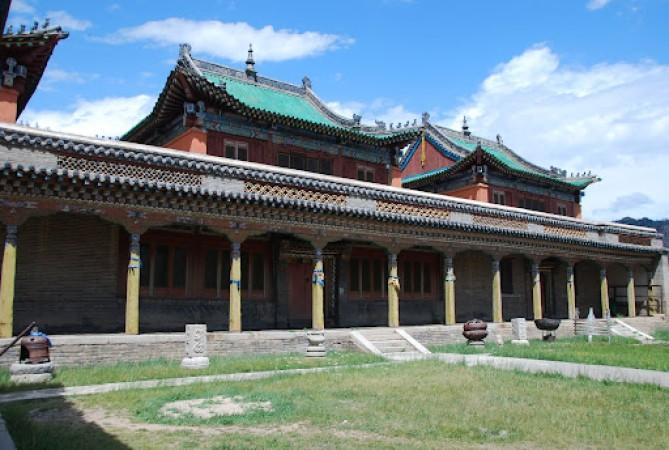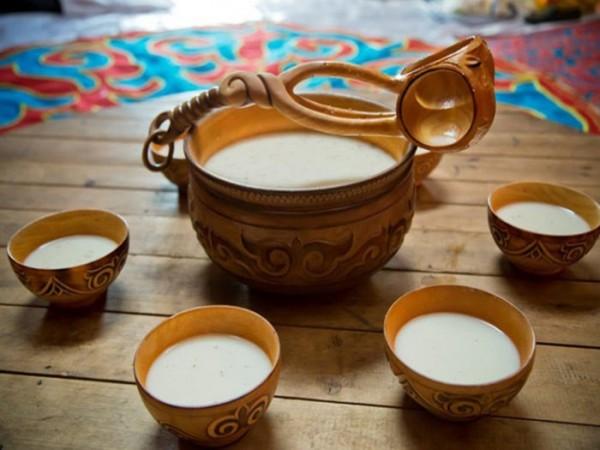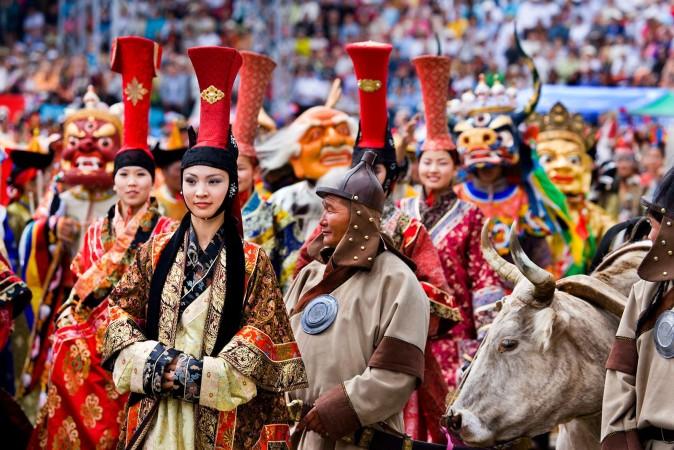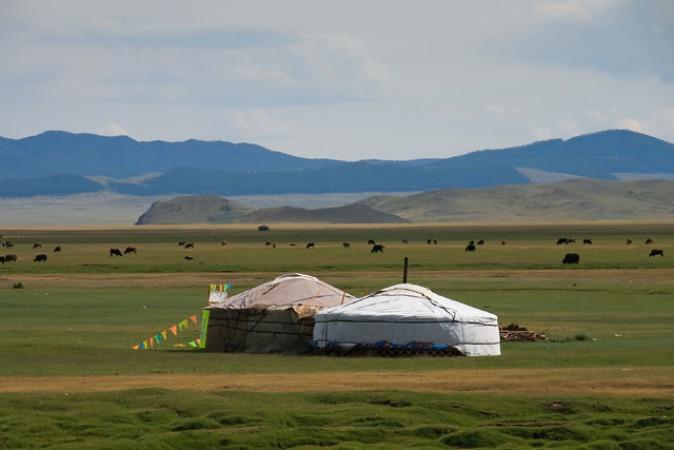Explore Tsetserleg - Mongolia Travel, Asia
Tsetserleg, located in the middle of Mongolia, is the lovely capital of Arkhangai Province. Tsetserleg is a hidden gem that provides guests with a unique combination of natural beauty and ancient Mongolian culture. Surrounded by the majestic Khangai Mountains, this small town is an ideal destination for those seeking to explore the less-traveled paths of Mongolia. Tsetserleg delivers a remarkable experience for everyone interested in adventure, history, or culture.
Population: Approximately 20,000 in 2017.
Economy: Tsetserleg’s economy primarily revolves around agriculture, livestock farming, and local trade. It also benefits from tourism, thanks to its scenic landscapes and cultural heritage.
Landmarks: Famous for the Zayain Khüree Monastery, Museum of Arkhangai, and Bulgan Mountain.
Mongolia

Overview of Tsetserleg
History & Cultural Influence
Tsetserleg has a rich history that dates back to the 17th century when it was established as a Buddhist center. The town was originally built around the Zayain Khüree Monastery, a significant religious and cultural site that played a vital role in the spiritual life of the region. Over the centuries, Tsetserleg evolved, blending its religious roots with the nomadic traditions that are central to Mongolian culture. In addition to its religious significance, Tsetserleg has also been influenced by the nomadic lifestyle that defines much of Mongolia. This unique blend of religious and nomadic influences makes Tsetserleg a fascinating destination for those interested in exploring Mongolia’s cultural diversity.
Interaction with The Locals
Tsetserleg is a small town with a population of approximately 20,000 residents. The people of Tsetserleg are predominantly ethnic Mongols, with a rich cultural heritage deeply rooted in Buddhism and nomadic traditions. The town's citizens are known for their warm hospitality, making visitors feel welcome and offering a glimpse into the authentic Mongolian way of life. The close-knit community is characterized by a strong connection to the land and a lifestyle that harmonizes with the natural environment, reflecting the deep cultural values that have been passed down through generations.

A corner of Tsetserleg - © Flickr
Top Attractions in Tsetserleg
Tsetserleg is a treasure trove of attractions that highlight its natural splendor and deep cultural roots. Below are some must-visit sites that offer a rich experience of what this Mongolian town has to offer.
Zayain Khüree Monastery
This historic monastery is the cornerstone of Tsetserleg’s spiritual life. Established in the 17th century, it stands as a beautiful example of traditional Mongolian architecture. Visitors can explore its intricate halls, adorned with religious artifacts, statues, and murals that narrate the rich history of Buddhism in Mongolia. The tranquil ambiance provides a serene setting for reflection and learning.
Museum of Arkhangai
Adjacent to the Zayain Khüree Monastery, the Museum of Arkhangai offers an in-depth look at the history and culture of the Arkhangai Province. The exhibits span various themes, including the region’s natural history and nomadic traditions. Displayed artifacts like traditional attire, tools, and ancient weapons offer a glimpse into the everyday life of the Mongolian people. The museum’s Buddhist exhibits perfectly complement a visit to the nearby monastery.
Bulgan Mountain
A short hike from the town center, Bulgan Mountain offers panoramic views of Tsetserleg and its surrounding landscapes. The mountain is a popular spot for locals and visitors alike, providing a perfect location for a leisurely hike or a picnic with stunning views. The ascent is relatively easy, making it accessible to most travelers, and the summit offers breathtaking vistas of the Khangai Mountains and the lush valley below.
Chuluut River Canyon
A short drive from Tsetserleg, the Chuluut River Canyon is a dramatic natural attraction where the Chuluut River has carved a deep gorge through the basalt rocks. The canyon’s steep walls create a stunning contrast with the river’s rushing waters, making it a popular spot for photography and nature walks. During the warmer months, visitors can also enjoy fishing in the river, which is home to several species of trout.

Zayain Khüree Monastery - © Wikimedia
Must-Try Dishes in Tsetserleg
Exploring Tsetserleg isn’t just about soaking in its natural beauty and cultural heritage—it’s also a journey through the rich flavors of Mongolian cuisine. The town offers a variety of traditional dishes that reflect the nomadic lifestyle and resourceful cooking methods of its people.
- Buuz (Mongolian Steamed Dumplings): These hearty dumplings are filled with minced meat, typically mutton or beef, mixed with onions and spices. Their warm, savory flavor makes them a comforting meal, especially during the colder months.
- Khuushuur (Mongolian Fried Meat Pies): These deep-fried meat pies are filled with a mixture of ground meat, onions, and spices, then fried until golden brown. The crunchy exterior contrasts deliciously with the juicy filling, making Khuushuur a favorite snack or light meal.
- Tsuivan (Mongolian Stir-Fried Noodles): Tsuivan is a beloved noodle dish that’s perfect for those seeking comfort food. This dish consists of homemade wheat noodles stir-fried with slices of meat, usually beef or mutton, and a mix of vegetables like carrots, onions, and cabbage.
- Airag (Fermented Mare’s Milk): No visit to Tsetserleg would be complete without trying Airag, Mongolia’s famous fermented mare’s milk. This traditional beverage has a slightly sour taste with a mild alcoholic content and is a significant part of the Mongolian diet.
- Guriltai Shul (Mongolian Noodle Soup): Guriltai Shul is a comforting noodle soup that features homemade noodles in a flavorful broth, usually made from meat such as beef or mutton. The soup is often enriched with vegetables and spices, making it a hearty and warming dish that’s perfect for chilly weather.

Airag (Fermented Mare’s Milk) - © Bao Giao Thong
Festivals & Local Celebrations
Tsetserleg’s festivals and local celebrations are a vibrant reflection of its cultural heritage. These events provide visitors with a unique opportunity to immerse themselves in the traditions and communal spirit of the town.
Naadam Festival
The Naadam Festival is Mongolia’s most celebrated event, and Tsetserleg hosts its own version with great enthusiasm to celebrate the "Three Manly Games" of wrestling, horse racing, and archery every July. These traditional sports are deeply rooted in Mongolian culture and history, and the festival is a lively display of athleticism, skill, and community pride. Visitors can enjoy the colorful parades, traditional music, and dance performances that accompany the competitions.
Nomadic Naadam
A unique variation of the traditional Naadam, the Nomadic Naadam festival in Tsetserleg focuses on showcasing the lifestyle and skills of Mongolia’s nomadic herders. This event, typically held in late summer, includes demonstrations of herding techniques, traditional games, and cultural performances. It's a fantastic opportunity for tourists to learn about the nomadic way of life and witness firsthand the methods that have maintained Mongolian herders for millennia.
Harvest Festival
Celebrated in early autumn, the Harvest Festival is a time of gratitude and celebration for the bountiful produce of the year. The festival includes food fairs where locals showcase and sell their harvests, as well as cultural performances and competitions. Visitors can sample fresh, local produce, enjoy traditional music and dance, and experience the strong sense of community that characterizes life in Tsetserleg.

Naadam Festival - © CNN
What to Do in Tsetserleg
Tsetserleg offers a variety of activities that cater to different interests, whether you’re an outdoor enthusiast, a history lover, or someone looking to immerse yourself in local culture.
- Hiking and Trekking: There are several trails around the town that offer varying levels of difficulty, from leisurely walks to more challenging treks. Popular routes include hikes to Bulgan Mountain for panoramic views or longer treks to the Khorgo-Terkhiin Tsagaan Nuur National Park, where you can explore volcanic craters, forests, and the serene White Lake.
- Horseback Riding: Horseback riding is an integral part of Mongolian culture, and Tsetserleg provides an excellent setting for this activity. A horseback tour will take you through the scenic countryside, allowing you to experience the landscape as the nomads do.
- Cultural Tours: For those interested in history and culture, Tsetserleg opportunities to explore the town’s key historical sites, providing insights into the town’s religious and cultural heritage, as well as the daily lives of its residents.
- Fishing and Camping: The area around Tsetserleg, particularly near Terkhiin Tsagaan Nuur, is ideal for fishing and camping. Camping near the lake also provides a perfect opportunity to experience the Mongolian wilderness, with clear night skies offering stunning views of the stars.
Shopping in Tsetserleg
Shopping in Tsetserleg offers a unique opportunity to purchase traditional Mongolian goods and souvenirs that reflect the town’s cultural heritage. While Tsetserleg may not have large commercial centers, its local markets and artisan shops are treasure troves for those looking to take home a piece of Mongolia.
- Local Markets: The central market in Tsetserleg is a bustling place where locals gather to buy and sell a variety of goods. The market is an excellent place to purchase traditional Mongolian items such as woolen garments, leather goods, and handcrafted jewelry.
- Artisan Shops: These shops often feature goods made by local craftsmen, including felt products, intricate leatherwork, and traditional Mongolian musical instruments like the Morin Khuur (horsehead fiddle).
- Souvenir Shops: In addition to the markets and artisan shops, there are a few souvenir shops in Tsetserleg that cater specifically to tourists. These stores offer a range of items, from postcards and magnets to more elaborate souvenirs like traditional Mongolian clothing and decorative art.
- Handmade Felt Products: Felt-making is a traditional craft in Mongolia, and Tsetserleg is known for producing high-quality felt goods. From slippers and hats to decorative rugs, felt products make for durable and authentic souvenirs.

Ger camping in Tsetserleg - © Flickr
Weather in Tsetserleg: Best Time to Visit
Tsetserleg experiences a continental climate characterized by distinct seasons, which influences the best times to visit and the activities you can enjoy.
Spring in Tsetserleg
Spring in Tsetserleg is a time of renewal and mild weather. Temperatures gradually warm up, ranging from 5°C to 20°C (41°F to 68°F). This is a great time for outdoor activities like hiking and exploring the countryside as the landscape comes to life with blooming flowers and fresh green vegetation. However, it can still be chilly, especially in the evenings, so packing layers is advisable.
Summer in Tsetserleg
Tsetserleg is particularly common during the summer months, when temperatures range from 20°C to 30°C (68°F to 86°F). The weather is warm and pleasant, making it ideal for trekking, horseback riding, and participating in local festivals. This is also the peak tourist season, so you can expect lively local events and a bustling atmosphere. Remember to bring sunscreen and remain hydrated during your exploration.
Autumn in Tsetserleg
Autumn in Tsetserleg is characterized by cooler temperatures, ranging from 5°C to 20°C (41°F to 68°F), and stunning fall foliage. The fresh air and vibrant scenery make it an ideal time for photography and outdoor adventure. It's also an excellent time to attend the Harvest Festival. As temperatures drop, layering and preparing for occasional cold snaps are recommended.
Winter in Tsetserleg
Winter in Tsetserleg is cold and snowy, with temperatures often dropping below freezing, ranging from -15°C to -5°C (5°F to 23°F). Snow blankets the town and surrounding areas, creating a winter wonderland perfect for those who enjoy snowy landscapes and winter sports. Be prepared for the cold with insulated clothing and accessories. Winter is quieter in terms of tourism, providing a peaceful and serene experience.

Summer in Tsetserleg is the best season for horse riding - © Mongolia Tourism
Essential Travel Information
Getting Around Tsetserleg
- Local Transportation: In Tsetserleg, local transportation primarily consists of taxis and shared minibuses. Taxis are available for hire and are a convenient option for getting around the town and reaching nearby attractions. Shared minibuses, or “sheremet,” operate on fixed routes and are an affordable way to travel within and outside the town.
- Bicycles and Motorbikes: Bicycles and motorbikes are a popular choice for exploring Tsetserleg and its surroundings. This mode of transportation provides flexibility and allows you to enjoy the scenic countryside at your own pace.
- Car Rentals: For those planning to explore beyond Tsetserleg, renting a car can be a practical option. Ensure that you are comfortable driving in rural areas and have a valid international driving permit if required.
- Horseback Riding: In keeping with Mongolian tradition, horseback riding is a unique way to explore the countryside around Tsetserleg and experience the landscape and traditional nomadic lifestyle.
ATM & Banking Services
Managing your finances in Tsetserleg is straightforward with several banking and ATM services available to visitors. ATMs are conveniently located around the town center and major commercial areas, accepting international credit and debit cards for cash withdrawals in Mongolian Tugrik (MNT). For currency exchange and additional banking services, you can visit local banks or exchange offices. While credit cards are widely accepted at many places, carrying some cash is recommended for transactions at smaller vendors and markets.
Where to Stay in Tsetserleg
- Hotels: Tsetserleg has several hotels that provide comfortable and convenient lodging. Options range from mid-range hotels with essential amenities to more upscale establishments offering additional services.
- Guesthouses: For a more intimate and personalized experience, consider staying at one of Tsetserleg’s guesthouses. These accommodations often provide a homely atmosphere and the opportunity to interact with local hosts.
- Traditional Ger Camps: Experience Mongolian nomadic culture by staying in a traditional ger camp. These camps provide a unique lodging experience with comfortable ger (yurt) accommodations, often situated in scenic locations.
- Camping: If you prefer to stay closer to nature, consider camping in the beautiful surroundings of Tsetserleg. The area around Terkhiin Tsagaan Nuur National Park offers several camping sites where you can enjoy the great outdoors and stunning landscapes.
Articles for you

Explore Yala National Park - Sri Lanka Travel, Asia
Tucked away in Sri Lanka’s southeastern corner, Yala National Park is where wild nature meets deep tradition. Known worldwide for its leopard population, the park is also home to elephants, sloth bears, crocodiles, and hundreds of bird species. Beyond wildlife, Yala opens doors to a cultural landscape dotted with ancient temples, Buddhist ruins, and coastal villages. For travelers seeking more than just a safari, Yala offers a chance to explore eco-tourism, local communities, and sacred heritage sites.
Population: The Yala National Park area doesn’t have a human population.
Economy: The economy around Yala National Park thrives on a blend of eco-tourism, agriculture, and local services. Safari tours, eco-lodges, and cultural experiences drive steady income for nearby towns like Tissamaharama and Kataragama, supporting thousands of families.
Landmarks: Famous for Block I of Yala and wildlife encounters, including elephants, sloth bears, crocodiles, and exotic bird species.

Explore Galle - Sri Lanka Travel, Asia
Nestled on Sri Lanka’s southern coastline, Galle is a vibrant city where history meets the sea. Its cobbled streets, colonial architecture, and serene beaches make it a must-visit destination for travelers seeking a blend of culture, adventure, and relaxation. A UNESCO World Heritage site, Galle captivates visitors with its Dutch Fort, bustling markets, and friendly locals. Whether you’re exploring the ramparts at sunset or savoring fresh seafood by the shore, Galle promises an unforgettable journey into Sri Lanka’s heritage.
Population: Approximately 113,000 in 2023.
Economy: Galle’s economy thrives on tourism, trade, and fisheries. The city’s historic fort, colonial architecture, and coastal charm draw thousands of international visitors each year, making tourism its main economic driver. Fishing remains vital for local livelihoods, supplying fresh seafood across the region.
Landmarks: Famous for the Galle Fort, Dutch Reformed Church & Maritime Museum, and Unawatuna Beach.

Explore Bentota - Sri Lanka Travel, Asia
Nestled along Sri Lanka’s southwestern coast, Bentota is a tropical paradise that blends golden beaches, vibrant culture, and thrilling adventures. Famous for its calm waters, luxury resorts, and scenic river estuary, Bentota has become a top destination for travelers seeking both relaxation and authentic experiences. From serene beach walks at sunrise to adrenaline-pumping water sports, this coastal town offers a perfect balance of leisure and exploration. With its proximity to Colombo and Galle, Bentota is easy to reach, making it an ideal stop for both short escapes and extended holidays.
Population: Approximately 37,000 in 2023.
Economy: Bentota’s economy thrives mainly on tourism, which drives local businesses such as hotels, restaurants, and wellness retreats. The town also benefits from fishing, coconut cultivation, and handicrafts like wood carving and batik textiles. Many residents rely on the growing demand for water sports and Ayurvedic treatments, making tourism the backbone of both income and employment in the area.
Landmarks: Famous for Bentota Beach, Bentota River Safari, and Kande Vihara Temple.

Explore Mirissa - Sri Lanka Travel, Asia
Mirissa is a charming coastal town on Sri Lanka’s southern shoreline. Known for its golden beaches, turquoise waters, and vibrant marine life, it has become a must-visit stop for travelers exploring the island. Many come for whale watching, surfing, and sunset views at Coconut Tree Hill, but Mirissa offers much more than postcard beauty. The fishing boats you see anchored by the bay carry generations of stories. Local traditions, delicious cuisine, and a laid-back rhythm of life shape every visitor’s experience.
Population: Approximately 4,700 in 2023.
Economy: Mirissa’s economy is largely shaped by its coastal location. Fishing has long been the backbone of local livelihoods, with generations relying on the Indian Ocean for income. In recent decades, tourism has become the main driver of growth, thanks to whale watching, surfing, and beachside hospitality.
Landmarks: Famous for Mirissa Beach, Coconut Tree Hill, and Parrot Rock Bridge.

Explore Nuwara Eliya - Sri Lanka Travel, Asia
Tucked away in the Central Highlands of Sri Lanka, Nuwara Eliya is often called “Little England”. With its rolling tea plantations, cool misty mornings, and colonial charm, this mountain town feels like a step into another world. Travelers come here to breathe fresh air, walk through flower gardens, sip the finest Ceylon Tea, and enjoy a pace of life far from the island’s busy cities. Whether you’re drawn by scenic landscapes, heritage architecture, or the warmth of its people, Nuwara Eliya is a destination that blends nature, culture, and history in perfect harmony.
Population: Approximately 781,000 in 2023.
Economy: Nuwara Eliya’s economy thrives mainly on tea production, as it sits in the heart of Sri Lanka’s central highlands, famous worldwide for Ceylon Tea. The city also benefits from a growing tourism industry, attracting visitors with its colonial charm, cool climate, and scenic landscapes.
Landmarks: Famous for Gregory Lake, Hakgala Botanical Garden, and Victoria Park.

Explore Sukau - Malaysia Travel, Asia
Nestled on the banks of the Kinabatangan River in Sabah, Malaysian Borneo, Sukau is a destination where wildlife, culture, and conservation come together. Known as one of Asia’s top spots for river safaris and eco-tourism, this quiet village offers a front-row seat to encounters with Bornean orangutans, pygmy elephants, proboscis monkeys, and exotic birdlife.
Population: Approximately 1,400 in 2019.
Economy: Sukau’s economy is shaped by its riverine location and natural resources. Traditionally, the Orang Sungai community relied on fishing, small-scale farming, and forest gathering for their livelihood. Today, the village has shifted toward eco-tourism, with river cruises, jungle trekking, and homestays providing income.
Landmarks: Famous for the Kinabatangan River cruises, Gomantong Caves, and Ox-bow lakes and wetlands.
